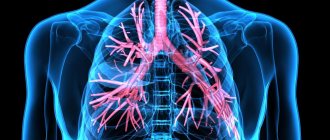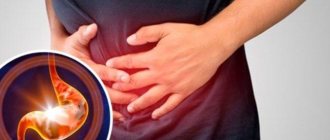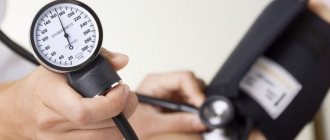What is angina?
Angina pectoris is not an independent disease, but a syndrome that is a manifestation of coronary heart disease (CHD). Coronary heart disease occurs due to insufficient blood supply to the heart muscle. Angina pectoris is a kind of heart signal about oxygen deficiency of the heart. How does the heart give this signal? The signal is felt in the form of attacks of short-term sudden acute squeezing, pressing, burning pain in the region of the heart. In some patients, the pain is accompanied by a state of general discomfort, a feeling of lack of air, and interruptions in the functioning of the heart.
What triggers an angina attack?
At first, attacks can be mild, short-term, 1-2 minutes each, during very heavy or intense physical activity, running, climbing stairs, going out into the cold, walking against the wind. An attack can be triggered by emotional disorders, smoking, staying in a stuffy space, overeating, taking energy tonics or excessive doses of alcohol.
How to distinguish angina from myocardial infarction?
| Typical angina pectoris | Typical myocardial infarction |
| Pain in the center of the chest, in the middle third of the sternum, can spread to the left arm, shoulder blade, lower jaw, and upper abdomen. | The pain is similar to that of angina pectoris, but more often it is felt as more intense, unbearable, tearing and affects the entire left half of the chest. |
| Discomfort is mild or moderate. | Severe discomfort, increased sweating, dizziness, nausea, increasing feeling of lack of air, fear of death. |
| An attack of angina is more often associated with previous physical activity or emotional arousal. | Myocardial infarction can occur at any time, including at rest. |
| The pain attack takes about 3 – 15 minutes. | A painful attack with discomfort and suffocation lasts for at least 15 – 30 minutes or more, and there is a tendency for symptoms to increase. |
| With rest, the pain usually goes away. | In a state of physical rest, the pain does not go away completely and intensifies when talking and deep breathing. |
| The use of nitroglycerin under the tongue or in the form of an aerosol from 1 to 3 doses interrupts an attack of angina. | Symptoms do not completely resolve after 3 doses of nitroglycerin. |
Nausea and heart pain
Pain and discomfort appearing in the heart area are an alarming sign. In this way, diseases often appear that pose a serious danger to human health and life. Heart pain and nausea often occur together. How should one act in such a situation, and what pathologies can these symptoms indicate?
Causes of nausea and pain in the heart area
It should be remembered that pain and discomfort in the heart area primarily signals that a vital organ is in danger. Often the appearance of symptoms such as nausea and heart pain requires immediate medical attention. Along with the above symptoms, patients often experience shortness of breath, severe weakness, anxiety, and fear.
Nausea and heart pain can occur simultaneously when the gastrointestinal or cardiovascular system is affected. The most common causes of such symptoms are the following pathologies:
- heart failure;
- attack during myocardial infarction;
- hypertensive crisis;
- vegetative-vascular dystonia;
- acute diseases of the pancreas or liver;
- bronchitis and pneumonia in acute severe form.
Heart failure may include chest pain and nausea. These symptoms are caused by several factors: disturbances in the anatomy of the muscle tissue of the heart, deterioration in the functioning of this organ, the appearance of swelling in the abdominal cavity and chest, as well as increased intracardiac pressure. All this leads to nausea and pain in the heart.
During myocardial infarction, pain and painful, prolonged nausea may appear some time before the attack. This period can be several days. The same symptoms are observed with the acute development of pathology. In addition to these two signs, during an attack caused by myocardial infarction, others are noted: weakness, vomiting, tachycardia, a sharp rise in blood pressure followed by a decline, gradually increasing shortness of breath and an increasing feeling of burning and pain in the chest space. Patients often complain of an unreasonable feeling of fear and anxiety; cases of fainting during an attack are widespread. It is also possible for the pathology to be asymptomatic, in which its only manifestation is nausea.
A hypertensive crisis is a sudden rise in blood pressure. Symptoms of this condition include severe pressing pain in the heart, nausea that leads to vomiting but does not bring relief, and dizziness.
The diagnosis of “vegetative-vascular dystonia” is quite common in our country, but in many other countries it is not made. According to the international classification, similar conditions in which there are signs of disruption of the normal functioning of the autonomic nervous system are called somatoform dysfunctions or disorders. Symptoms that indicate vegetative-vascular dystonia are insomnia, pressure instability, tachycardia, vomiting, nausea and heart pain. All these signs, most often, are of a psycho-emotional nature. There were practically no complications or consequences observed. However, the appearance of such symptoms requires careful attention, a comprehensive examination and, if necessary, proper treatment.
In some cases, pathologies of the gallbladder, pancreas and liver are manifested by pain that is localized or radiates to the heart area. With such diseases, frequent nausea may occur that does not lead to vomiting. Pain can affect the hypochondrium and abdomen. A symptom of gallbladder damage is bitterness in the mouth.
Sharp pain in the chest and nausea are frequent companions of inflammatory diseases of the lower respiratory system. Pain with pneumonia and bronchitis is caused by strong constant overstrain of the intercostal muscles, which occurs with prolonged painful coughing. Nausea is associated with general damage to the body by toxins released by pathogenic microorganisms. In addition, this phenomenon can be a side effect of medications taken. You can determine whether pneumonia or bronchitis is the cause of chest pain and nausea by paying attention to the presence of other symptoms. Thus, increased temperature, increased sweating, chills, runny nose and other signs of damage to the upper respiratory system indicate respiratory diseases.
What to do for heart pain, nausea and dizziness
The appearance of nausea, heart pain, vomiting, weakness must be treated carefully; these symptoms should not be left to chance, as they can have the most dire consequences. A qualified doctor and the modern level of diagnostics allow you to quickly determine the cause of the problem, and then prescribe the necessary course of treatment. In each specific case, a different treatment is prescribed, so you cannot be treated on the advice of friends and neighbors.
The specialist must, in addition to recommendations for treating the underlying disease, prescribe therapy in order to cope with unpleasant symptoms. In addition, he gives advice on organizing a daily routine, necessary rest, opportunities for physical activity and a diet that should be followed.
Urgent medical help should be sought if the following warning signs are present:
- heart pain and nausea do not subside after taking nitroglycerin tablets;
- in addition to nausea and pain in the heart, there is severe shortness of breath, very high blood pressure, the appearance of cold sweat, inexplicable anxiety, fear and restlessness;
- the duration of pain in the heart exceeds a quarter of an hour.
You can get rid of nausea and chest pain only after identifying the causes of their occurrence. Since different pathologies require the use of different drugs and treatment methods.
In case of functional disorders of the heart and blood vessels, you should take medications that lower pressure and normalize the functioning of the heart muscle. The therapeutic complex also includes drugs that have a positive effect on the condition of blood vessels and blood composition.
For vegetative-vascular dystonia, complex treatment is prescribed, including medications that improve the functioning of the nervous system and sedatives. Other treatment methods are also prescribed, such as physiotherapy, therapeutic massage and exercise, reflexology, etc.
A disease such as myocardial infarction requires urgent medical care, which can only be provided in a hospital setting. The course of treatment, its duration and the means used depend on the individual data of the patient and the extent of damage to the heart muscles. The chances of a favorable outcome increase significantly if you consult a doctor in a timely manner (less than 10-12 hours).
Treatment of inflammatory pathologies of the respiratory system depends on the nature of the disease: viral or bacterial. In addition to antivirals or antibiotics, it includes vitamins, mucolytics and detoxification therapy. It is important to choose the right antibiotic for treatment. Although there are broad-spectrum antibiotics that are quite effective, drugs prescribed based on the results of microbiological tests are much more effective.
Diseases of the pancreas, liver and gall bladder require specific treatment to restore the affected organs. To get rid of nausea in such cases, take antiemetics, for example, Zoloft, Cerucal or others. A thorough examination of the patient is imperative.
Causes of pain in the heart area
It is necessary to clearly understand that pain in the heart and nausea are, first of all, alarming signals that make it clear to a person that vital organs are in serious danger, and the current situation requires the use of immediate measures. One way or another, pain localized in the chest and nausea are symptoms of serious diseases; they should not be ignored, because along with them shortness of breath, a feeling of weakness, fear, and anxiety may appear.
Nausea and chest pain can appear simultaneously if several pathologies occur at once: cardiovascular and gastrointestinal. However, most often pain and nausea have the following causes:
• vegetative-vascular dystonia
• heart failure
• heart attack (myocardial infarction)
• pneumonia, bronchitis
• hypertensive crisis
• diseases of the liver, pancreas
Vegetative-vascular dystonia is a common diagnosis in Russia, but in Sweden and Europe there is no such diagnosis. Similar conditions that manifest themselves with a large number of symptoms associated with dysfunction of the autonomic nervous system and neuroregulation of the body in Swedish medicine are designated as somatoform disorders or dysfunctions (Somatoforma störningar, in the international classification of diseases has the number F45). Among the common symptoms of vegetative-vascular dystonia, people often find pain in the heart area, nausea, vomiting, insomnia, tachycardia, and unstable blood pressure. The symptoms that arise speak more about a mental than a physical illness, and almost never lead to serious consequences, although they require a thorough examination and, possibly, adequate therapy.
Nausea and chest pain may be signs of heart failure. Anatomical changes in the heart muscle and a decrease in the physiological functions of the organ contribute to the appearance of edema in the chest and abdominal cavity, and the pressure inside the heart increases. All this leads to pain in the chest, as well as nausea.
A heart attack (myocardial infarction) is sometimes preceded several days by the appearance of pain in the heart and painful nausea. Similar symptoms are also characteristic of the acute process of developing the pathology of a heart attack. Vomiting, nausea, weakness, low blood pressure replace hypertension, tachycardia, while shortness of breath, a feeling of fear and burning pain in the chest increase, and cases of fainting are not uncommon. Often nausea is practically the only symptom of myocardial infarction, and the disease develops painlessly.
Sharp chest pains and a feeling of nausea often accompany bronchitis and pneumonia. Pain in such cases occurs after a prolonged unproductive cough due to overstrain of the intercostal muscles. Nausea is a consequence of general intoxication due to the activity of microorganisms and taking medications. A sign that heart pain and nausea are symptoms of inflammatory diseases of the upper respiratory tract is the presence of elevated body temperature, chills, and increased sweating.
A sharp jump in blood pressure characterizes a hypertensive crisis. In this case, patients experience pressing pain in the heart area, nausea, vomiting, which does not bring relief, and dizziness.
With diseases of the liver, gallbladder and pancreas, pain can be localized in the chest area, and frequent nausea without vomiting also occurs. Often pain is felt in the hypochondrium area, and bitterness may appear in the mouth.
What to do
Chest pain, vomiting, nausea, weakness should not be ignored, they cannot be ignored. Timely diagnosis and consultation with a competent specialist can differentiate the cause of symptoms and direct all therapeutic measures to eliminate the disease. Therefore, it is necessary to find out from your doctor what you can take for nausea. In each specific case, the answer to this question will be different.
It is imperative to follow the doctor’s recommendations regarding the treatment of the underlying disease that causes unpleasant symptoms, as well as adhere to the proposed diet, exercise regimen and rest.
There is no need to hesitate to seek emergency help if there are threatening symptoms:
- heart pain does not stop for more than 20 minutes;
- pain does not go away after taking nitroglycerin;
- an attack of nausea and heart pain is accompanied by high blood pressure, cold sweat, shortness of breath, and fear.
How to Deal with Chest Pain and Nausea
A prerequisite for the successful elimination of chest pain and nausea is an accurate diagnosis of the patient’s condition. After all, to relieve nausea in case of dysfunction of the heart and blood vessels. it is necessary to take medications that lower blood pressure, correct heart function, improve the condition of blood vessels and the rheological properties of the blood. Therapy for vegetative-vascular dystonia is complex and includes sedatives, drugs that optimize the functioning of the nervous system, as well as individual organs and systems. In addition, they also resort to non-drug treatment methods: therapeutic massage, physiotherapeutic procedures, reflexology.
Myocardial infarction requires urgent and competent measures in a hospital setting. Therapy, its duration, and volume directly depend on the area of damage to the heart muscle. The success of treatment is much greater if it is started for the first time 12 hours
Pneumonia and bronchitis, in addition to antimicrobial and antiviral therapy, always includes detoxification agents, vitamins, and mucolytic drugs. Despite highly effective broad-spectrum antibiotics, the most acceptable is the prescription of drugs based on microbiological research data.
For diseases of the liver and pancreas, the use of drugs that restore the function of these organs, as well as antiemetic drugs (Cerucal, Zoloft), helps quite well against nausea. Additional examination methods will not be superfluous; they will help you individually select the necessary therapy.
The causes of heart pain and nausea are varied. By listening to the “voice” of one’s own body, a person is able to timely catch signals of dysfunction of organs and systems, and by consulting a doctor, find the right solution to the problem that has arisen.
Why does my heart hurt?
First aid for an angina attack
If an angina attack occurs, you must follow the instructions received from your attending physician or (if there were no such instructions) follow the algorithm:
- Note the time of onset of the attack.
- Measure blood pressure, heart rate and pulse.
- Sit (preferably in a chair with armrests) or lie in bed with the head of the bed raised.
- Provide fresh air (free your neck, open a window).
- Take acetylsalicylic acid (aspirin 0.25 g), chew the tablet and swallow.
You should not take acetylsalicylic acid (aspirin) if you are intolerant to it (allergic reactions) and have already taken it that day, as well as if there is a clear exacerbation of gastric and duodenal ulcers.
6. Take 0.5 mg of nitroglycerin. If in the form of a tablet, put it under the tongue and dissolve; if in the form of a capsule, bite it, do not swallow; if in the form of a spray, inhale (inject) one dose under the tongue without inhaling.
If, after taking nitroglycerin, severe weakness, sweating, shortness of breath, or a severe headache appears, then you need to lie down, raise your legs (on a bolster, pillow, etc.), drink one glass of water and then do not take nitroglycerin.
You should not take nitroglycerin if you have low blood pressure, severe weakness, sweating, severe headache, dizziness, acute impairment of vision, speech or coordination of movements.
7. If the pain has completely disappeared and the condition has improved after taking aspirin and 1 dose of nitroglycerin after 5 minutes, limit physical activity and discuss further treatment with your doctor.
8. If the pain persists for more than 10-15 minutes, you must take nitroglycerin a second time and urgently call an ambulance!
ATTENTION ! If aspirin or nitroglycerin is not available and the pain persists for more than 5 minutes, call an ambulance immediately!
9. If pain persists even after taking the second dose of nitroglycerin after 10 minutes, you need to take nitroglycerin a third time. Wait for an ambulance.










